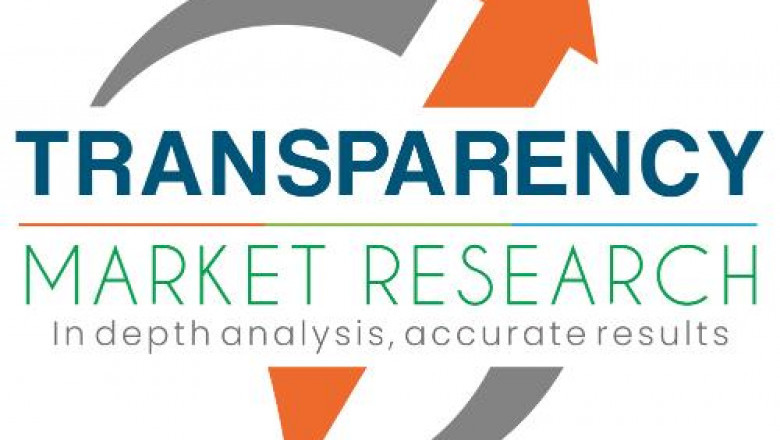views
The global market for latex-saturated paper is evolving rapidly, driven by increasing demand across multiple industries. Valued at approximately US$ 2.7 billion in 2023, this market is projected to grow steadily at a compound annual growth rate (CAGR) of 3.1%, reaching an estimated US$ 3.6 billion by 2032. The rise of durable, water-resistant packaging in food & beverage, along with growing applications in trade show graphics, construction, and publishing, is fueling this expansion. This blog explores the key market drivers, regional trends, innovations, and industry outlook shaping the future of latex-saturated paper.
What is Latex-Saturated Paper?
Latex-saturated paper, sometimes called latex-impregnated or latex-coated paper, is paper treated with latex—a synthetic rubber compound—to enhance its physical properties. This treatment improves the paper’s resistance to water, oil, moisture, and tearing, making it suitable for applications requiring durability and protection from environmental factors.
Key Market Drivers
- Demand for Durable, Water-Resistant Packaging
One of the strongest growth engines for latex-saturated paper is the food & beverage sector’s escalating need for packaging materials that can withstand moisture, oils, and rough handling. Consumers are increasingly drawn to packaged goods for their convenience, safety, and hygiene—especially in developing markets like Asia Pacific. Latex-saturated paper’s water and tear resistance makes it ideal for creating packaging that secures food products, preserves freshness, and enhances shelf life.
Moreover, the environmental benefits of latex-infused specialty papers, which often use recyclable fiber-based materials, align well with the sustainability goals of global brands and governments.
- Growth of Trade Show Graphics
Trade show graphics—such as banners, tabletop displays, and exhibition signage—are critical marketing tools for many industries. Latex-saturated paper offers high print quality and durability, making it a preferred choice for graphics that must withstand the rigors of trade shows and fairs. As more companies invest in sophisticated exhibition materials to attract attention and communicate brand messaging, demand for latex-coated specialty paper rises.
- Expanding Applications Across Industries
Beyond packaging and graphics, latex-saturated paper finds use in construction (wall coverings and laminates), publishing and bookbinding (to increase durability and longevity of books), healthcare (medical packaging), and automotive (gaskets and insulation). This diversified application base contributes to steady market growth.
Regional Market Dynamics
Asia Pacific currently leads the latex-saturated paper market, holding the largest market share in 2023. This region’s rapid industrialization, expansion of the food & beverage sector, and rising retail and trade show activities are significant growth contributors. Countries like China and India are fueling demand due to evolving consumer lifestyles and increased packaged product consumption.
Europe shows steady growth fueled by strong packaging manufacturing sectors, particularly in the UK, which recorded US$ 13.6 billion in packaging sales in 2020. North America also presents growth opportunities, especially with the U.S. driving innovation and demand in the food & beverage packaging domain.
Innovation and Technology
Market leaders such as UPM-Kymmene Oyj, Neenah Inc., and Potsdam Specialty Paper Inc. are investing heavily in R&D to develop more advanced, eco-friendly, and high-performance latex-saturated papers. Recent product launches include heat-sealable barrier papers and fiber grinding disc backings that improve product stability and efficiency.
Companies are also expanding their production capacity and regional footprint to meet increasing demand while focusing on sustainable fiber sources and recyclability.
Market Challenges and Opportunities
While demand is growing, the latex-saturated paper market faces challenges such as fluctuating raw material costs and competition from alternative packaging materials like plastics and bioplastics. However, rising environmental regulations and consumer preferences for sustainable options create significant opportunities for latex-saturated paper to gain market share.
The ability to innovate—combining durability with environmental responsibility—will be key for manufacturers to differentiate their offerings and capture new customers.
Conclusion
The global latex-saturated paper market is poised for healthy growth through 2032, driven by rising needs for durable, water-resistant, and environmentally conscious packaging solutions, as well as increased adoption in trade show graphics and other industrial uses. With a forecast CAGR of 3.1%, the market’s expansion to US$ 3.6 billion reflects both sustained demand and innovation.
Manufacturers who prioritize sustainability, technological advancement, and regional market penetration will be well-positioned to capitalize on this growing opportunity. As consumer and industry needs evolve, latex-saturated paper will continue to play a vital role in packaging, marketing, and industrial applications worldwide.






















Comments
0 comment